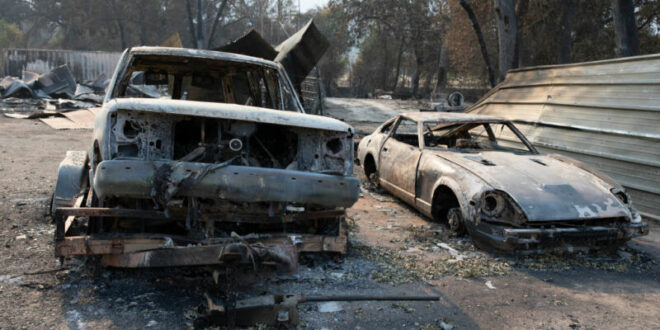Xinhua News Agency | Getty Images
The US interior department’s decision not to buy more drones with Chinese parts has made it more difficult to fight wildfires, according to an internal departmental memo, which lays bare one cost of the Trump administration’s crackdown on Chinese technology.
The memo, which was written by the department’s Office of Aviation Services earlier this year, found that by the end of the year, the department will have carried out only a quarter of the controlled burning it might otherwise have done had it gone ahead with planned drone purchases.
The US is experiencing one of its worst years for wildfire outbreaks thanks to hot weather and a lack of firefighters. And while none of those appear to have happened on federal land, government insiders warn the de facto ban on buying drones with Chinese components risks making the situation worse.
The internal memo, which was written earlier this summer and has been seen by the Financial Times, warned: “[The department’s current fleet] must expand to meet the demand of preventative measures mandated for the reduction of wildfire via vegetation reduction.”
It found that by the end of the year, the department will only have carried out 28 per cent of the controlled burning it could have done had it purchased 17 new drone-based firefighting systems as planned.
David Bernhardt, the interior secretary, announced the crackdown on Chinese-made drones last year, amid concerns about the national security implications of flying them over federal lands. It was one of a wider set of actions the Trump administration has announced targeting Chinese technology companies.
The department has the largest civilian drone program in the federal government, used for everything from firefighting to monitoring wildlife. But it has been mostly unable to fly since last year, when Mr Bernhardt decided all 810 departmental aircraft should be grounded pending a review into the security risks they pose, given that they all contain Chinese parts.
Mr Bernhardt did allow an exemption for carrying out controlled burning on federal land, a regular method of halting wildfires in their tracks. But at the same time, Susan Combs, one of his assistant secretaries, said that no new drones should be purchased without her authorization, which she has not since given.
This decision halted the planned purchase of 17 new Ignis systems, which are used to start controlled fires. Without them, the internal memo says the department has either used aircraft manned by firefighters—putting lives at risk—or not carried out the burning at all.
It said: “Denying the acquisition of UAS [drone] aerial ignition devices directly transfers risk to firefighters who must use manned aircraft to complete these missions rather than a safer option utilizing UAS.” And it recommended restarting the planned purchases—something that has not yet happened.
The interior department said: “Secretary Bernhardt is committed to deploying all resources necessary to protect human health and safety. The secretary’s order grounding the department’s drones achieves these important objectives while addressing serious national security concerns that were raised in classified briefings late last year.”
© 2020 The Financial Times Ltd. All rights reserved. Not to be redistributed, copied, or modified in any way.
 Unmanned Aerial Vehicle The latest drone news
Unmanned Aerial Vehicle The latest drone news




